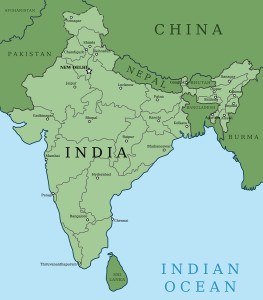Coalition is debuting a free, publicly available cybersecurity and risk assessment tool. Catastrophe risk modeling firm AIR Worldwide released a Multiple Peril Crop Insurance Model for India.
***
Coalition, a cyber insurance company focused on small and midsize business, is debuting a free, publicly available cybersecurity and risk assessment tool.
 The Cyber Risk Assessment is designed to assess the expected probability and severity of a security incident for a company. As well, it evaluates an organization’s cybersecurity standing relative to other Coalition policyholders and provides clearcut steps for companies to reduce their risk. The assessment alerts companies about critical software vulnerabilities, exposed databases and infrastructure, malware infections, and lookalike domain registrations, and provides tailored security recommendations to prevent ransomware, data breaches and social engineering attacks, among other features.
The Cyber Risk Assessment is designed to assess the expected probability and severity of a security incident for a company. As well, it evaluates an organization’s cybersecurity standing relative to other Coalition policyholders and provides clearcut steps for companies to reduce their risk. The assessment alerts companies about critical software vulnerabilities, exposed databases and infrastructure, malware infections, and lookalike domain registrations, and provides tailored security recommendations to prevent ransomware, data breaches and social engineering attacks, among other features.
To get a personalized Cyber Risk Assessment, companies need to provide their business email, name and industry, and the assessment is generated automatically and sent to their business email. Companies are not required to register or create an account but are required to provide an email address with the domain name to be scanned as a security precaution to ensure that users can only scan domains with which they are associated. Once the necessary information is entered into the tool, a risk assessment is typically sent to the individual’s email in under one minute.
***
Catastrophe risk modeling firm AIR Worldwide released a Multiple Peril Crop Insurance (MPCI) Model for India.
The new offering helps support probabilistic assessments of potential losses caused by yield shortfalls for 11 major crops across the two main India crop-growing seasons. The MPCI Model for India is an event-based model, with an event defined as an individual crop year made up of a “kharif” season (the summer period from late spring into autumn) and the following “rabi” season (the winter period from autumn into the following spring), according to Boston-based AIR Worldwide, which is a Verisk subsidiary.
 The model features a stochastic catalog of 10,000 simulated crop years, each containing a kharif season and the following rabi season, which describes the wide range of possible crop loss scenarios, both common and rare, in the two seasons, AIR said.
The model features a stochastic catalog of 10,000 simulated crop years, each containing a kharif season and the following rabi season, which describes the wide range of possible crop loss scenarios, both common and rare, in the two seasons, AIR said.
It also features a historical catalog of losses based on a recast of the years 1979 through 2017. Both the stochastic and historic recast yield and loss catalogs reflect current crop “technology” levels (for example, current crop genetics, farmer skill, availability of chemical inputs), insurable exposure by district and PMFBY (Pradhan Mantri Fasal Bima Yojana) policy conditions as revised in late 2018.
Damage estimation accounts for the vulnerability of different crops to variations and extremes in environmental conditions that occur at specific periods during both the kharif and rabi growing seasons.
Sources: Coalition, AIR Worldwide





















 Northern California Flooding This Weekend Caused by Heavy Rain, High Tides
Northern California Flooding This Weekend Caused by Heavy Rain, High Tides  First Atlantic Hurricane Forecast for 2026 Suggests Season Close to 30-Year Norm
First Atlantic Hurricane Forecast for 2026 Suggests Season Close to 30-Year Norm  Breaking: Andersen to Replace Zaffino as CEO of AIG on June 1
Breaking: Andersen to Replace Zaffino as CEO of AIG on June 1  Good Times for U.S. P/C Insurers May Not Last; Auto Challenges Ahead
Good Times for U.S. P/C Insurers May Not Last; Auto Challenges Ahead 







